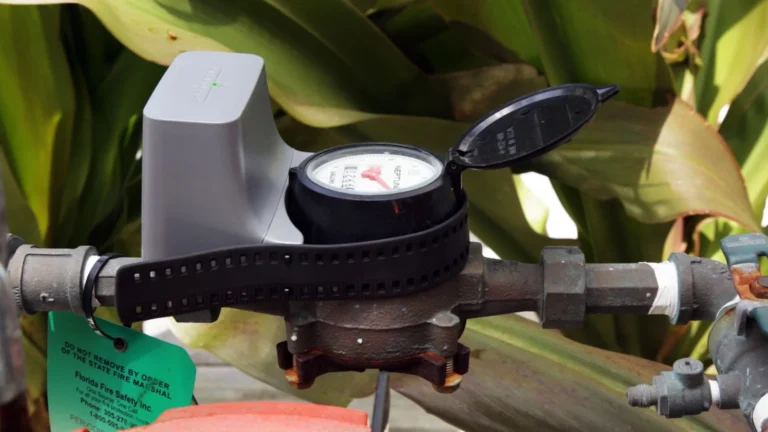Let’s talk about water flow meters. You might not think about them much, but they’re actually super important tools, especially in manufacturing plants.
I’ve spent time looking at how these little devices make a huge difference in industrial settings, and today I want to walk you through what they are and why they matter.
Water is one of those resources we often take for granted until something goes wrong. That’s where flow meters come in – they’re the unsung heroes keeping track of every drop moving through your systems.
What Is Water Flow Meter Sensor?
A water flow sensor is exactly what it sounds like – a device that measures how much water is flowing through a pipe or system. Pretty simple, right?
But here’s where it gets interesting. These aren’t just basic counters. Modern flow meters can track usage in real-time, detect unusual patterns, and even integrate with broader monitoring systems.
Most flow meters work on one of a few principles. Some use mechanical parts like turbines that spin as water passes through.
Others use ultrasonic technology, sending sound waves through the water to measure flow rates based on how those waves change. There are also magnetic flow meters that create a magnetic field and measure the voltage produced as water moves through it.
Fun fact I learned while researching this – the first water meters date back to the 1800s! They’ve come a long way since then, with smart capabilities that would blow those Victorian engineers’ minds.
Benefits of Using Water Flow Meters and Sensors in Manufacturing Plants
Manufacturing plants use tons of water – for cooling machinery, processing materials, cleaning equipment, and so much more. Without proper monitoring, that water usage can get out of hand fast.
I talked with plant managers who installed flow meters throughout their facilities, and nearly all of them had the same reaction: “I had no idea we were using THAT much water!”
Let’s break down exactly how these meters help manufacturing operations.
Optimizing Water Usage
The first big benefit is simply knowing what’s happening with your water.
You can’t manage what you don’t measure. Flow meters give you real usage data rather than estimates or guesses.
A typical manufacturing plant might use thousands or even millions of gallons of water daily. Studies show that just by installing meters and monitoring usage, companies typically reduce water consumption by 15-20% without making any other changes.
One plant manager told me: “It was like turning on the lights in a dark room. Suddenly we could see everything that was happening with our water systems.”
The data from flow meters helps identify which processes use the most water. Maybe your cooling towers are the big users, or perhaps it’s your cleaning processes. Once you know, you can focus your efficiency efforts where they’ll have the biggest impact.
Cost Savings
Let’s talk money. Water isn’t free, and in many areas, it’s getting more expensive every year.
Flow meters create direct financial benefits in several ways:
First, there’s the obvious savings from using less water. If you reduce consumption by 15%, your water bill drops by roughly the same amount.
Second, many areas charge industrial users for wastewater based on their water intake. Use less water, pay less for wastewater treatment.
Third, flow meters help spot issues that waste money. One manufacturer I spoke with discovered a malfunctioning valve that was letting water run continuously during off-hours. Fixing that one problem saved them $12,000 a year!
The numbers add up quickly. A medium-sized plant might spend $100,000 annually on water. Cutting that by even 10% means $10,000 straight to the bottom line.
Reducing Water Waste
Beyond the financial aspect, there’s the environmental impact to consider.
Manufacturing accounts for about 16% of total water withdrawals globally. As water scarcity becomes a bigger issue worldwide, reducing industrial water waste is crucial.
Flow meters help spot leaks quickly. A pipe leaking just one gallon per minute wastes over 500,000 gallons a year! That’s crazy when you think about it.
One plant I visited installed flow meters that could detect even tiny leaks by monitoring nighttime usage when production was shut down. Any water flow during those hours meant something was leaking somewhere.
They caught a leak that was wasting about 3 gallons per minute. Not huge, but over a year that adds up to over 1.5 million gallons saved!
Some areas now offer rebates or incentives for water conservation measures, making the investment in flow meters even more attractive.
Improved Operational Efficiency
Water flow meters don’t just save water – they make your whole operation run better.
Real-time monitoring lets you see how water usage connects to production. You’ll notice patterns like increased flow during certain processes or shifts.
This data helps with scheduling maintenance. If a machine suddenly uses more water than normal, it might need attention before it breaks down completely.
Flow meters also help balance systems properly. One food processing plant found they were using way too much water pressure in their cleaning systems – more than was needed to get the job done. Adjusting this not only saved water but reduced wear and tear on equipment.
And let’s not forget compliance. Many industries have to report water usage for regulatory reasons. Flow meters make this reporting accurate and simple.
Preventing Equipment Damage
This benefit often gets overlooked, but it’s a big one.
Abnormal water flow can be the first sign of equipment problems. If a cooling system suddenly uses less water, it might be clogged. If it uses more, there could be a leak.
Flow meters can trigger alarms when water patterns change unexpectedly, letting maintenance teams investigate before small issues become big expensive ones.
One chemical plant installed flow meters throughout their cooling system. When one sensor showed reduced flow to a critical piece of equipment, they investigated immediately and found mineral buildup restricting water flow. Catching this early prevented the equipment from overheating and potentially causing a $50,000 repair job.
Water quality issues can also damage equipment over time. While basic flow meters don’t measure quality, advanced systems can monitor parameters like temperature and conductivity, providing early warning of problems.
Water Flow Sensor Uses in Manufacturing Plants
The applications for water flow sensors in manufacturing are practically endless.
Cooling systems benefit greatly from flow monitoring. Many machines need precise cooling to operate correctly, and flow meters ensure they’re getting exactly what they need.
Process water used directly in manufacturing products needs careful monitoring for both quality and quantity reasons. Think food and beverage production, pharmaceutical manufacturing, or paper mills.
Cleaning systems use enormous amounts of water in many facilities. Flow meters help optimize cleaning cycles to use only what’s necessary.
Steam systems benefit from flow monitoring too. Tracking condensate return can identify steam traps that aren’t working properly.
Even bathroom and kitchen facilities in large plants can benefit from monitoring. One facility found a single malfunctioning toilet was wasting thousands of gallons monthly!
Conclusion
Water flow meters might seem like simple devices, but their impact on manufacturing operations can be huge. From direct cost savings to preventing equipment damage to supporting sustainability goals, the benefits are clear.
If you’re running a manufacturing operation without comprehensive flow monitoring, you’re probably using more water than necessary and missing opportunities to improve your processes.
The good news is that installing flow meters is relatively straightforward, and the return on investment typically happens quickly. Most systems pay for themselves within 6-18 months through water savings alone.
So take a look at your water systems. Where could better monitoring help? The answers might surprise you – and lead to a more efficient, cost-effective operation.



